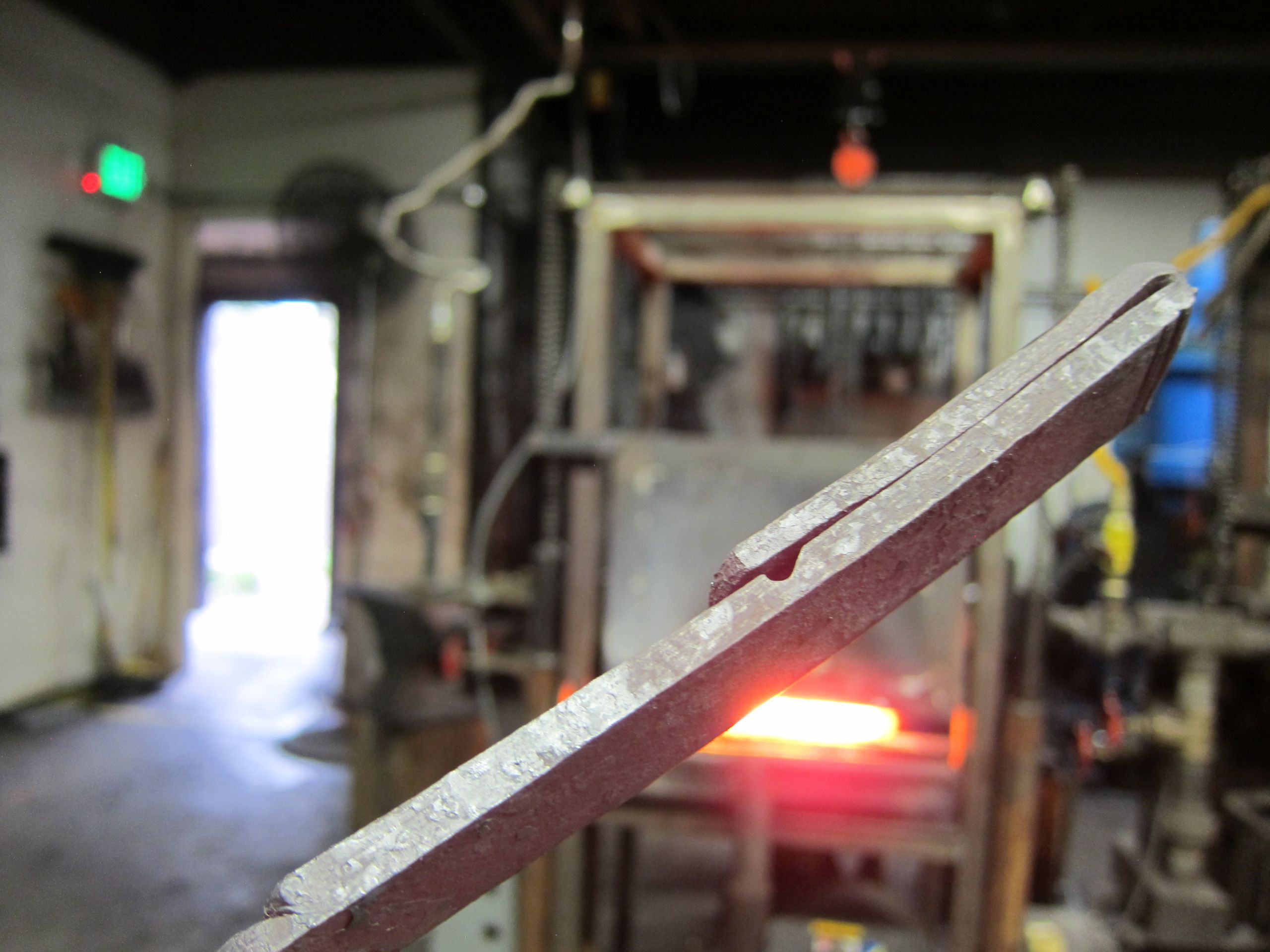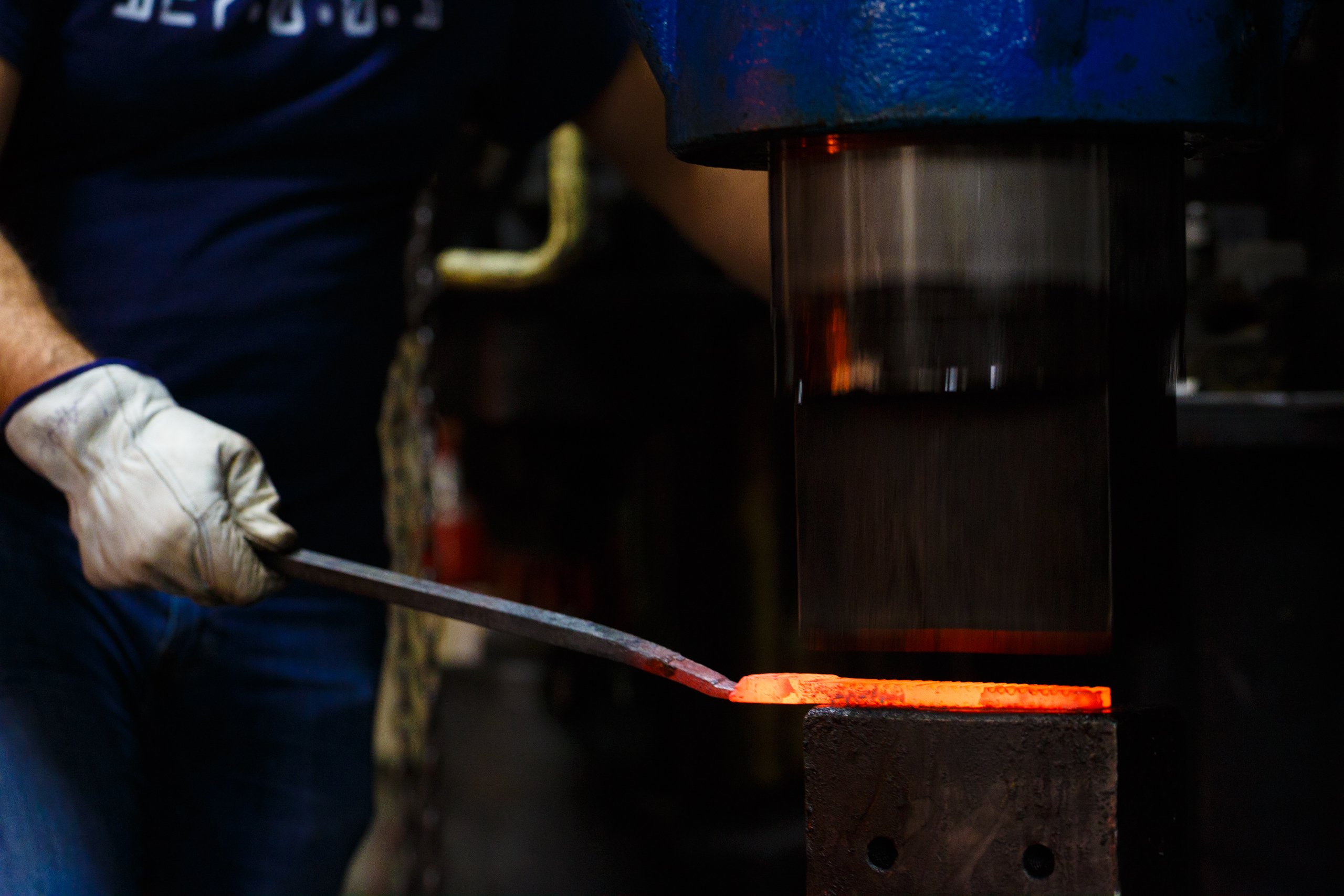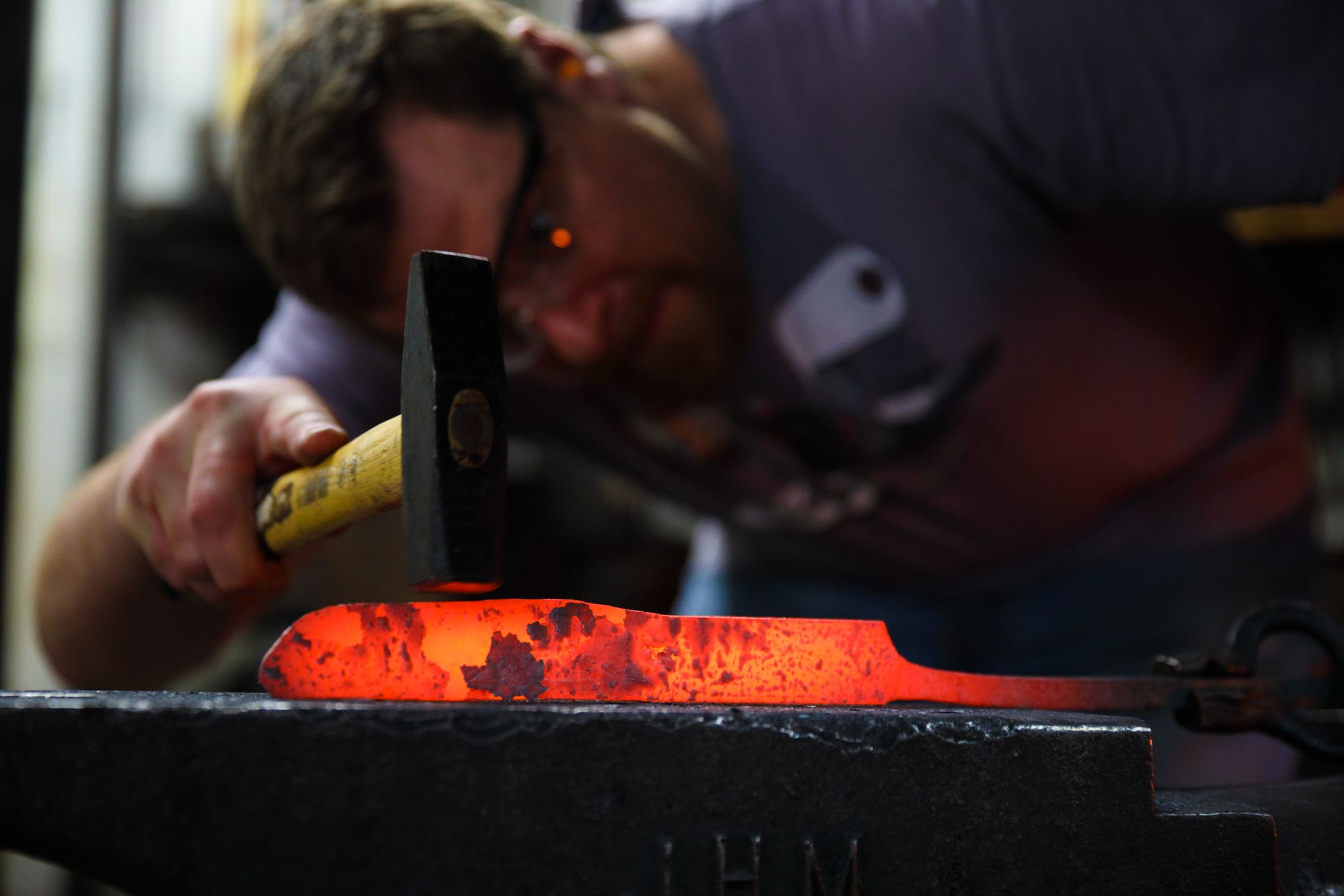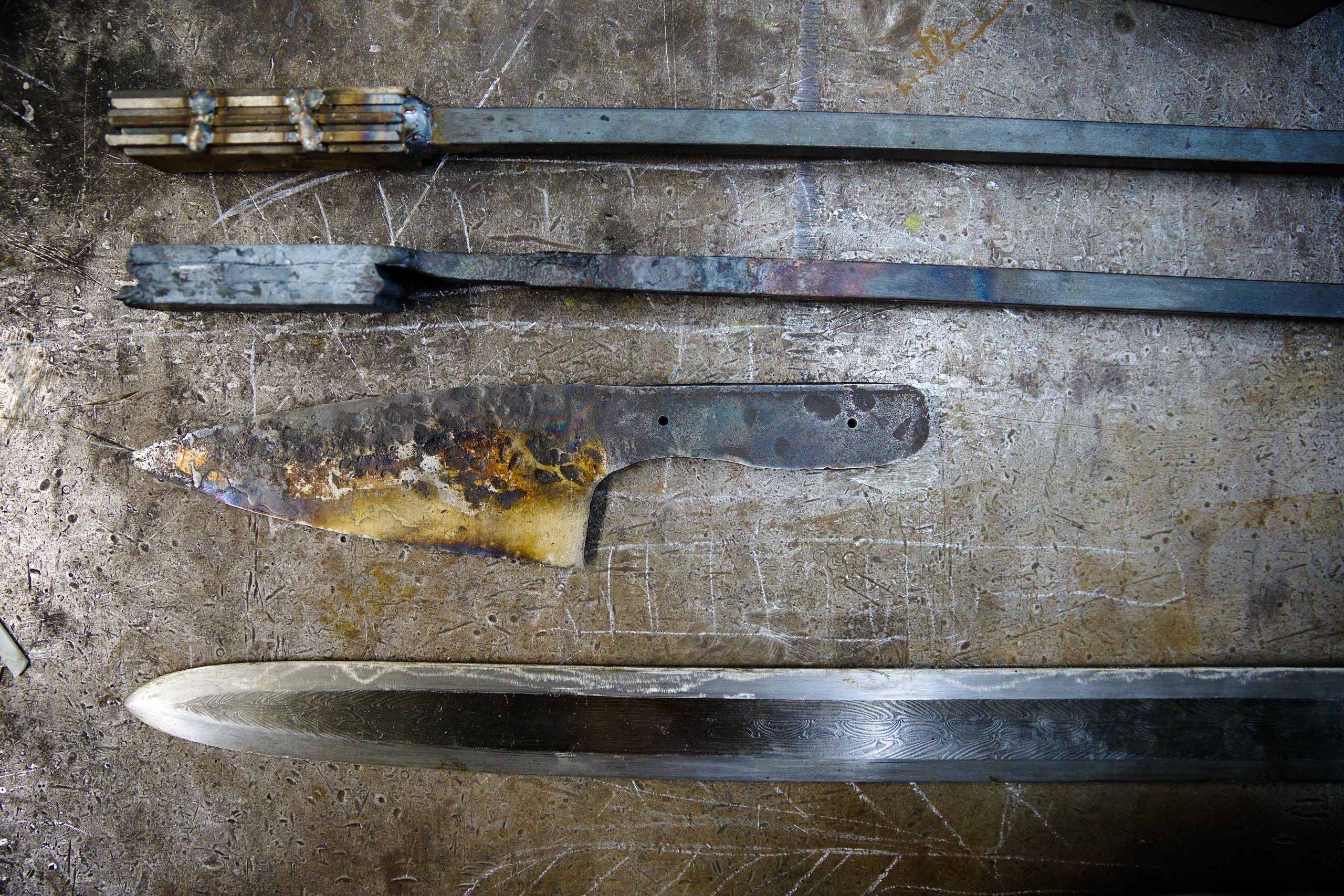Beginners Guide To Forge Welding
By Kristin Arzt
Beginners Guide To Forge Welding
What is forge welding?
Forge welding is a process used to join two pieces of metal together by heating them to a high temperature and then hammering them together. Developed in the Middle Ages, forge welding is one of the oldest methods of joining metals. Forge welding is an essential technique and an invaluable skill for a blacksmith. It came from the necessity to integrate little pieces of metal to form a large piece of metal. With practice, forge welding requires hand-eye coordination, speed, and attention to detail. It also requires the blacksmith to understand the ideal temperature of the material being welded.
What is forge welding used for?
Forge welding is used to create a more substantial metal by joining individual pieces of metal to create a larger or longer project. It is the traditional method of creating chains, swords, railroad spikes, and gates in the blacksmith shop. It is also used in the creation of cookware and farming equipment. Granting the blacksmith the ability to forge different types of metals into one, forge welding is a versatile and essential skill in the smithy.
Protecting yourself when forge welding

How to forge weld in 4 steps
Step 1: Prepare the Materials
Welding heat varies based on the type of metals being used. Before you heat up your materials, double-check their forging temperature. Watch for them to turn yellow when they are in high heat in your forge. If you continue heating past this point, the carbon in the metal starts to oxidize, ruining your metal. With practice, the forge welding temperature and its corresponding color will become more familiar.
Step 2: Fluxing
Remove your materials from the forge and sprinkle them with a flux. The Crucible’s Blacksmithing Department uses borax as a flux. Flux serves as a low-temperature, glassy shield that prevents the oxidation of the steel. Essentially, flux is a reducing agent that prevents oxidation. Oxidation ultimately causes scales or slag on the surface, which would prevent your metal from welding. Any dirty or contaminated metal will create a weak joint and increase the melting temperature of the metal. Flux is essential when forge welding, especially as a beginning in the blacksmith shop.

Step 3: Heating
After you have applied your flux, place the metal back in the forge. Bring it back up to a bright yellow heat. Do not leave it in the forge too long or you may cause your metal to spark, which will mean your metal is contaminated. Remember that each material has a different welding temperature, so do the research on your metals before you start the process.
Step 4: Joining and Hammering
Remove your piece from the forge when it glows bright yellow. Forge welding must be done quickly to prevent your material from becoming too soft. You can join your pieces together with metal wire until the main weld is formed. Then, bring your piece to the power hammer or a hydraulic press to join the weld. Make sure you do not hit the metal so hard that the weld slips out of place. Repeat until your finished weld is clean and has no weld lines.

How to learn forge welding
For centuries, forge welding was the only way to weld steel and iron, most commonly being used for pattern welding blades and knives. At The Crucible, you can deepen your blacksmithing skills in Forge Welding—a class that covers all the fundamentals of this traditional craft. You will learn how to forge weld metals together from expert bladesmith Jeff Pringle. Jeff makes knives from gathering iron ore himself, to smelting the iron, to forging the blade. Through following this process from start to finish, Jeff aims to reconnect to the processes of past bladesmiths, whose traditions go back thousands of years.

Forge welding FAQs
Is forge welding strong?
Yes, forging involves heating and reshaping the material. The diffusion bond of a forge weld is often stronger than a fusion weld in which the metal is liquefied. The high heat combined with pressure significantly increases the strength of the material. When forged, steel adapts to the new shape, and the deformed particle structure substantially increases strength.
Do you need to use a flux for forge welding?
Yes, you should use flux when forge welding. Borax removes any oxidation. Oxidation causes a layer over the steel, giving you an imperfect weld between the two pieces of steel. It bonds with the oxidation, becomes viscose, and squeezes out of the joint. You might see this oozing out of your pieces, this is known as slag. It helps seal the weld.
Can I join two different types of metal when forge welding?
With the right technique, heat, and pressure, you can forge any two metals into one.
What is the best temperature for forge welding?
Forge welding temperatures vary based on the metals you are forging. Different metals require varying temperatures and the amount of heat each piece needs varies. Some ferrous metals like aluminum require a very low temperature to heat and can be easily molded. Most aluminum alloys come up to temp at 800 degrees Fahrenheit. In contrast, steel needs to come up to temp at about 2000 degrees Fahrenheit.

















